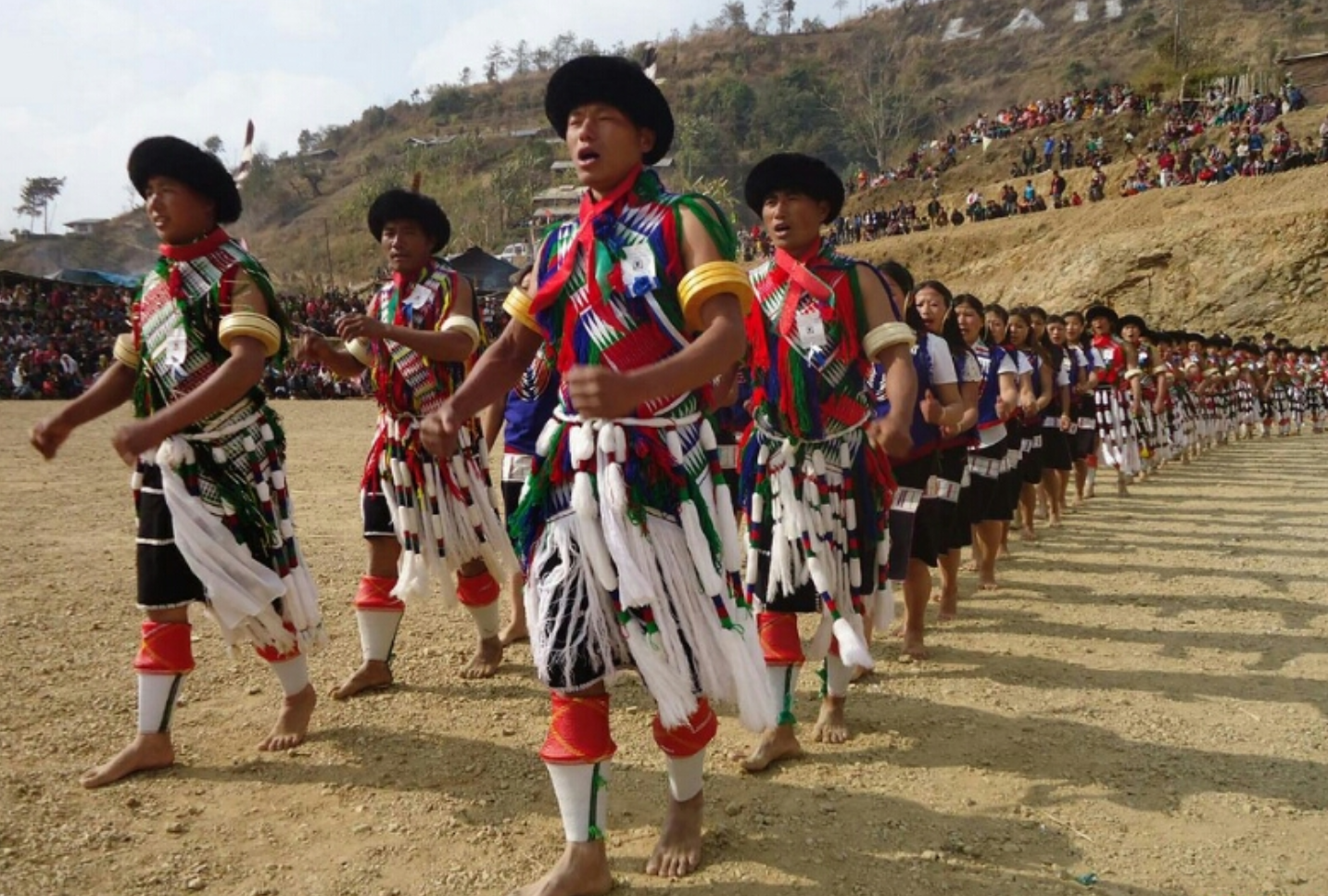The Poumai Nagas are an indigenous ethnic group of Nagas who live in Manipur’s Senapati District and Nagaland’s Phek District.
The Poumais are divided into four circles: Paomata, Lepaona, Chiliva, and Razeba. Their forefathers came from Machafii (Makhel) to these circles. The Poumais are a Tenyimi (also spelt Tenyimia/Tengima) sub-group who follow Machafii (Makhel) gennas and rituals.
Due to the practice of Head-Hunting in the past, the Poumai traditional villages are strategically located on hilltops and ridges. Every village is self-contained and operates democratically under the nominal leadership of Maveow. Maveow, along with the village elders, makes decisions, guides, and leads the villagers. He must strictly observe/perform rituals and gennas for the welfare and prosperity of the villagers. He is in charge of the village’s rituals and customs. He instills in the villagers the belief that “if Maveow prospers, the villagers suffer, and if Maveow suffers, the villagers prosper.” So, in order to remain Maveow, he must sacrifice all of his interests and time for the villagers.
The Poumais forethers are very altruistic people. Every able-bodied couple takes pride in working tirelessly to amass more and more wealth in order to provide a Feast of Merit to all the villagers. Villagers not only admire but also honor those who provide the Feast of Merit. Couple offering Feast of Merit to villagers two or three times is very common in every Poumai Village.

The Poumai forefathers are hardworking people. Work is a source of pleasure (Ava) for Poumai. The Poumai’s lives are filled with festivals and hard work throughout the year. As an example, consider Thounii and Laonii.
1. Thounii – This is the New Year’s celebration that takes place after harvesting.
2. Laonii- It is celebrated after the completion of paddy transplantation. This is an opportunity to interact with and renew bonds with brothers and sisters, as well as for male sanctification.
———–
Contributed to the International Council of Naga Affairs (ICNA) by Dr. Kh. Pou, Assistant Professor, Department of Economics, Kamala Nehru College, University of Delhi. ICNA reserves all rights.
Featured Image: The traditional attire of Poumai Naga / e-pao
Content Image: Tungjoy Village Maveow (King) House & Monoliths of Feast of merit / Kh. Alfred Naga. The picture has been reworked/merged by the International Council of Naga Affairs (ICNA).
———-
NOTICE: There are approximately 66/67 ethnic Naga groups. We only listed the Naga people’s nationality (ethnic Naga group) who had sent us a brief introduction. We welcome brief information (less than 1000 words) about each Naga people’s nationality/ethnic group. Please send the write-up submission to submissions@nagaaffairs.org with the subject line “For Naga People Listing.” It will be listed in the Naga “People” – Click Here


